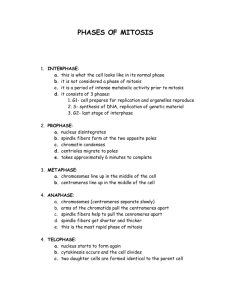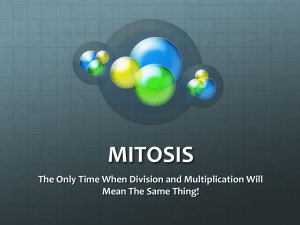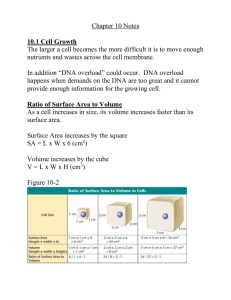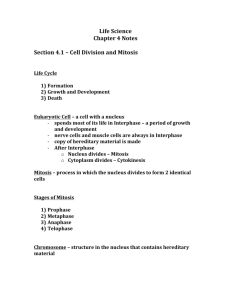Chapter 3 Lesson 1
advertisement
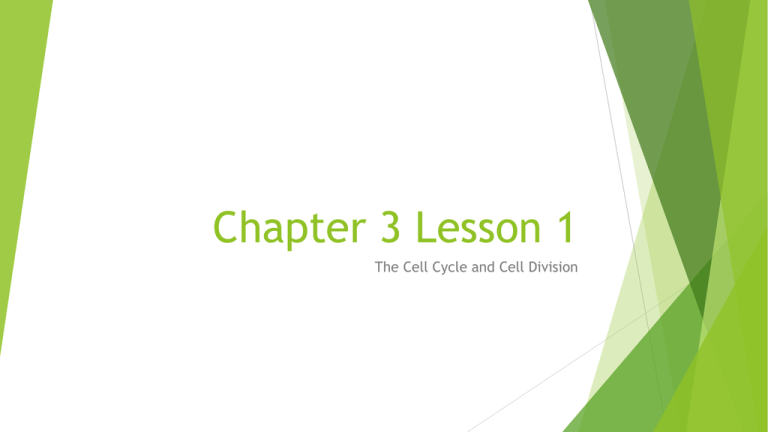
Chapter 3 Lesson 1 The Cell Cycle and Cell Division The Cell Cycle Cell Cycle- most cells in an organism go through a cycle of growth, development, and cell division. Organisms Grow Organisms Develop Organisms Replace Old and Damaged Cells Organisms Produce New Cells Phases of the Cell Cycle Two Main phases Interphase A cell spends most of its life in interphase Rapid growth and replication ( copying) of its membrane bound organelles Copying DNA Preparation for cell division Mitotic Phase Mitotic Phase A Cell reproduces at this time It has two phases Nucleus divides in the first stage Cell’s cytoplasm divides in the second stage End product of mitosis is two identical daughter cells Length of the cell cycle Depends on the type of cell dividing Eukaryotic cells have many membrane- bound organelles Some cells it may last 8 minutes Some cells it may take as long as a year Most human cells take 24 hours Interphase The cell rapidly grows Increase in cellular activities like making proteins Actively dividing cells make copies of their DNA The DNA is called chromatin It resembles spaghetti because it is long strands of chromatin are tangled together Interphase cont. G1 stage- Period of rapid growth, longest period of interphase S stage- continues to grow, it also copies its DNA G2- final period before the cell divides, also a period of growth Each organelle is also replicated or copied Mitosis The nucleus and the cells contents (organelles) divide Divided into 4 stages Prophase Metaphase Anaphase Telophase Prophase The copied chromatin coils together Chromosomes begin to appear Nucleolus disappears The nuclear membrane dissolves The spindle fibers begin to form Metaphase The chromosomes line up in the middle of the cell The spindle fibers attach to the centrioles and the centromeres Shortest phase of mitosis Anaphase The two sister chromatids in the chromosomes separate The spindle fibers pull them apart in opposite directions The cell begins to lengthen ( become longer or more oval in shape) Telophase The spindle fibers begin to disappear Chromosomes begin to uncoil Nuclear membrane forms around each set of chromosomes forming a new nucleus Spindle fibers begin to disappear Cytokinesis Animal Cell Cells cytoplasm divides In animal cell Cell membrane contracts around the middle of the cell A furrow forms The furrow gets deeper until the cell membrane comes together to divide the cell In plant cell A new cell wall forms in the middle of the plant cell A cell plate forms and grows outward until a new cell wall is formed. Plant cell Results of cell division Two identical daughter cells are formed Reasons for cell division Reproduction- some unicellular organisms reproduce this way Growth- growth of an organism is dependent on mitosis Replacement- cells in the skin are constantly being replaced Repair- when a bone breaks or you cut your skin
